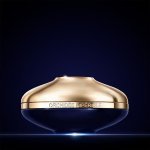
On Sunday, July 27, representatives of the European Union agreed to a completely unbalanced agreement that exclusively benefits the United States. While it allows for a return to a certain form of stability expected by economic operators, the deal confirms the end of multilateralism within the WTO. For the European beauty and personal care industry, this is likely to result in weaker export performance to this key market. Supply chains are likely to be reconfigured across the transatlantic region.
President Donald Trump has succeeded in imposing most of his tariff agenda to the European Union. Representatives of the 27-nation bloc either chose not to resist the pressure or were unable to do so, opting instead to avoid direct confrontation.
A 15-percent levy on European products
The deal provides for 15 percent customs duties on European exports to the United States. Only a short list of “strategic products” will not attract any tariffs, including aircraft and plane parts, certain chemicals and some agricultural products.
The stakes were high with a looming August 1st deadline and the USD 1.9 trillion transatlantic trading relationship , some 30% of the global trade, on the line.
“I’m 100 percent sure that this deal is better than a trade war with the United States,” EU’s top negotiator, trade commissioner Maros Šefčovič, told journalists at a press briefing on Monday.
Although the 15 percent figure is lower than the 30 percent tariff Trump once threatened the European Union with, it’s difficult to frame it as a win — particularly given that no similar concessions are being demanded from the United States in return. When the UK agreed to 10% tariffs in its May trade deal, European leaders considered the outcome a bad one.
It should be remembered that before the outbreak of trade hostilities by the Trump administration, cosmetic and perfume products traded between the two zones were often exempt from duties, or very lightly taxed. On average, European products, across all sectors, were submitted to a 4.8 percent duty when entering into the U.S.
What are the implications?
With the 15% rate, the European Union is being treated equivalently to Japan, which finalized a comparable agreement just last week. The region’s competitiveness will partly depend on the deals its main competitors in the cosmetics sector, particularly Korea and China, can reach with the Trump administration.
In Brussels, it is recognized that the negotiated deal leaves European manufacturers worse off than before. Officials maintain, however, that the alternatives — such as even higher tariffs or the uncertainty of having no agreement at all — would have been far more damaging.
“While this agreement puts an end to uncertainty, it poses a significant threat to the competitiveness of the French cosmetics industry,” said Emmanuel Guichard, CEO of FEBEA, France’s main trade association for the beauty industry.
In 2024, the United States was the leading global purchaser of French cosmetics and personal‐care products, importing EUR 2.8 billion — 12.6 % of the total of what French exports in the sector.
While the full details of the agreement —especially regarding exemptions for specific chemical products — are still unclear, the supply of raw materials, intermediates, and packaging from Europe is expected to become significantly less appealing to American buyers. If the EU’s competitors, particularly China, face similar or higher tariffs, the decline in European competitiveness may be somewhat contained. However, in some cases, manufacturing within the United States could become an attractive alternative once again.
American consumers might feel the pain too, at least in the short run—especially with tariffs piling on top of a weaker dollar, which makes European products even pricier. Companies importing foreign goods into the U.S. may be inclined to pass some or all of the additional costs on to consumers.
Much will therefore depend on the price elasticity of European cosmetic products. Prestige and luxury European perfumes face relatively little competition from U.S.-made alternatives. The strong recent performance of Interparfums suggests that this segment can remain resilient even in the face of price increases. The same may not hold true for makeup, which is likely more sensitive to pricing pressures.





